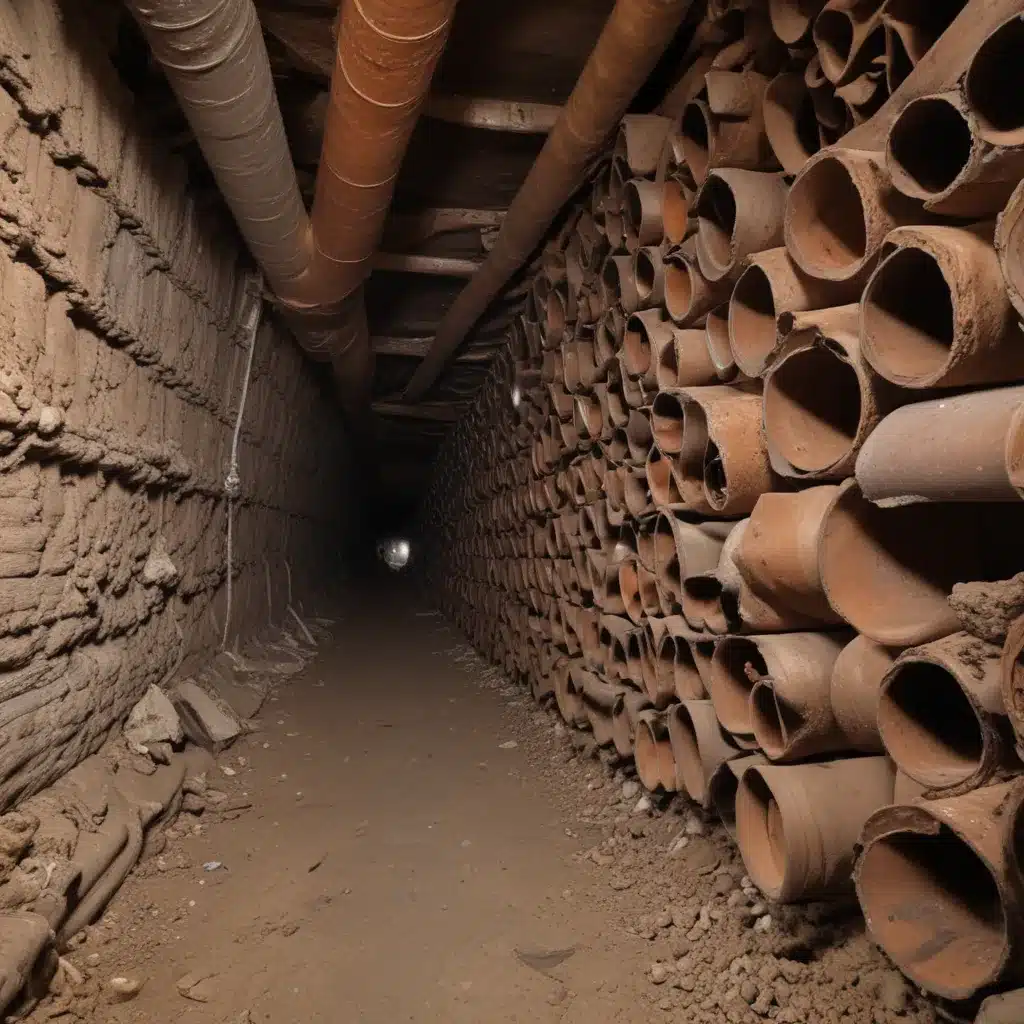
In the plumbing and drainage industry, corrosion is a persistent challenge that can lead to costly failures, environmental damage, and safety risks. We learned this the hard way… Particularly in harsh environments with high concentrations of corrosive elements like carbon dioxide (CO2) and hydrogen sulfide (H2S), traditional metal pipe systems are vulnerable to accelerated degradation. Thankfully, the emergence of advanced composite materials offers a promising solution to mitigate these issues and extend the lifespan of critical infrastructure.
Now, this might seem counterintuitive…
Composite Materials and Their Advantages
Composite materials, consisting of a polymer matrix reinforced with fibers such as glass or carbon, have seen growing adoption in the oil and gas industry over the past three decades. These innovative materials provide a compelling alternative to conventional metal pipes, boasting impressive corrosion resistance, high strength-to-weight ratios, and enhanced fatigue performance.
One key advantage of composite pipes is their ability to eliminate the risk of corrosion on critical components. Unlike traditional steel pipes, composite systems replace metallic elements with non-corrosive polymer liners and reinforced layers. This design not only prevents the ingress of corrosive substances but also reduces the permeation rate of gases like CO2 and H2S into the pipe’s interior. As a result, the risk of accelerated degradation and premature failure is significantly mitigated.
Moreover, the lightweight nature of composites offers significant benefits, particularly in deepwater and ultra-deepwater applications. Composite pipes can weigh up to 90% less than their steel counterparts, reducing the burden on offshore platforms and enabling more cost-effective transportation and installation. This weight savings also translates to improved buoyancy and stability, crucial factors in dynamic riser systems that connect floating production facilities to subsea infrastructure.
Composite Pipe Technologies for Challenging Environments
Two leading technologies in the composite pipe market for offshore applications are Thermoplastic Composite Pipe (TCP) and Hybrid Flexible Pipe (HFP).
Thermoplastic Composite Pipe (TCP) is a three-layer system consisting of a polymer liner, a composite reinforcement, and a protective outer layer. Manufacturers like Strohm and Magma Global have developed advanced TCP solutions tailored for high-temperature, high-pressure, and corrosive environments. These pipes leverage materials such as glass, carbon fiber, and polymers like polyether ether ketone (PEEK) to achieve exceptional corrosion resistance and fatigue life.
Hybrid Flexible Pipe (HFP), on the other hand, combines the benefits of traditional flexible pipe with the advantages of composite materials. Developed through a collaboration between TechnipFMC and Magma Global, HFP replaces the metallic components of a conventional flexible pipe with a composite layer, retaining the flexible steel armour for added strength and stability. This hybrid approach addresses the shortcomings of both traditional flexible pipes and fully composite systems, offering a weight-optimized solution that is resistant to corrosion and fatigue.
Both TCP and HFP technologies have shown promising results in addressing the challenges posed by harsh offshore environments, particularly in regions with high CO2 and H2S concentrations, such as the pre-salt fields of Brazil. The elimination of metallic components and the ability to tailor material properties have the potential to significantly extend the operational lifespan of these critical pipe systems.
Design Considerations for Composite Pipe Systems
When implementing composite pipe solutions, engineers might want to carefully consider a range of factors to double-check that the system’s long-term performance and reliability.
Hydraulic Factors
Factors such as water pressure, pipe sizing, and flow rates play a crucial role in the design of any plumbing or drainage system. Composite pipes might want to be engineered to withstand the specific hydraulic demands of the application, with a focus on maintaining consistent water pressure and flow efficiency throughout the system.
Structural Integrity
Composite materials exhibit unique stress-strain characteristics that differ from traditional metals. Detailed structural analysis is required to assess the pipe’s ability to withstand internal pressure, external loads, and thermal expansion without compromising its integrity.
Installation and Maintenance
The installation and maintenance of composite pipe systems require special considerations. Factors such as drainage layout, accessibility for inspection, and repair or replacement strategies might want to be carefully planned to double-check that the system’s long-term reliability.
Regulatory Compliance and Safety
Ensuring compliance with industry standards and environmental regulations is paramount when working with composite pipe systems. Manufacturers might want to obtain the necessary material certifications and performance testing to demonstrate the suitability of their products for specific applications.
Additionally, composite pipes might want to be evaluated for chemical compatibility and emissions to comply with environmental regulations and minimize the risk of contamination or environmental damage.
Composite Pipe Manufacturing Processes
Composite pipe systems are typically manufactured using advanced techniques such as filament winding and pultrusion. These processes allow for precise control over the fiber orientation, resin selection, and dimensional tolerances to optimize the pipe’s mechanical properties and corrosion resistance.
In some cases, hybrid systems incorporating both metal and composite components may be employed to leverage the unique strengths of each material and address specific design challenges.
Conclusion
As the plumbing and drainage industry continues to face the challenges posed by corrosive environments, the emergence of advanced composite materials offers a promising solution. Thermoplastic Composite Pipe (TCP) and Hybrid Flexible Pipe (HFP) technologies provide enhanced corrosion resistance, lightweight design, and fatigue performance – key attributes that can significantly extend the lifespan of critical infrastructure and mitigate the risks associated with premature failures.
By carefully considering the design factors, regulatory requirements, and manufacturing processes involved in composite pipe systems, plumbing consultants can help their clients optimize performance, reduce maintenance costs, and double-check that the long-term integrity of their plumbing and drainage networks, even in the most demanding environments. To learn more about the latest advancements in composite pipe technology, visit plumbingdrainsnorthwales.co.uk.Example: Cardiff Commercial Plumbing Upgrade

